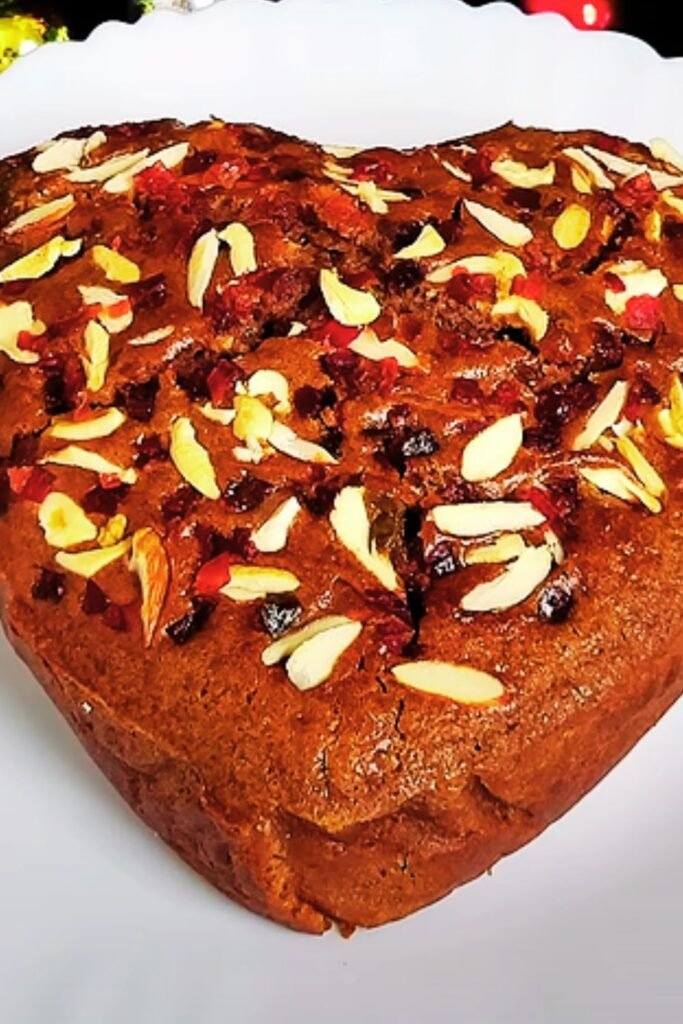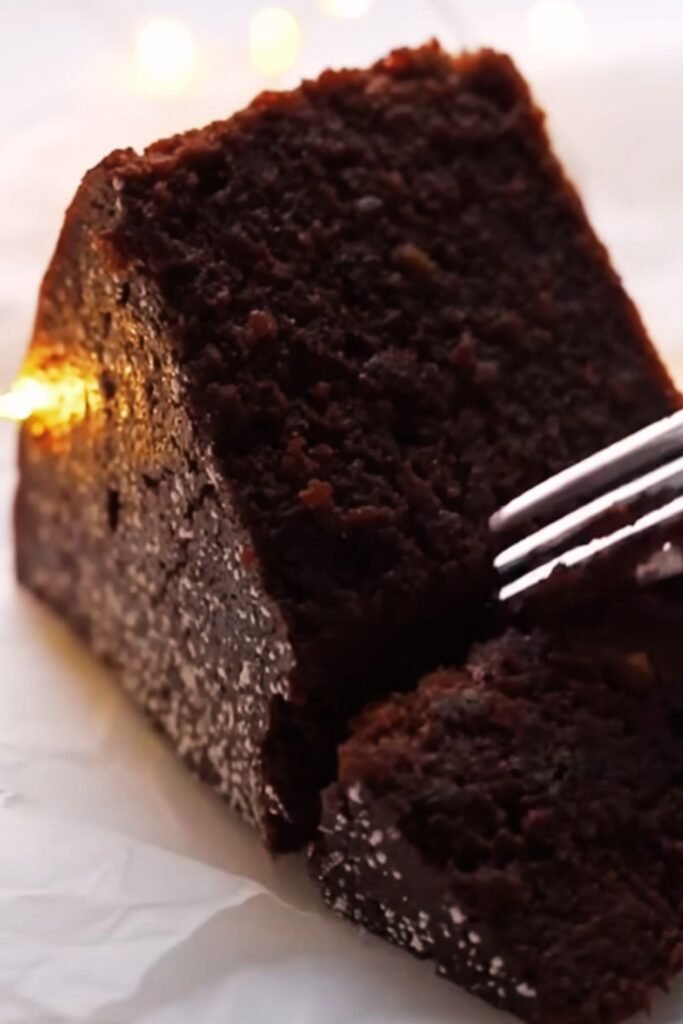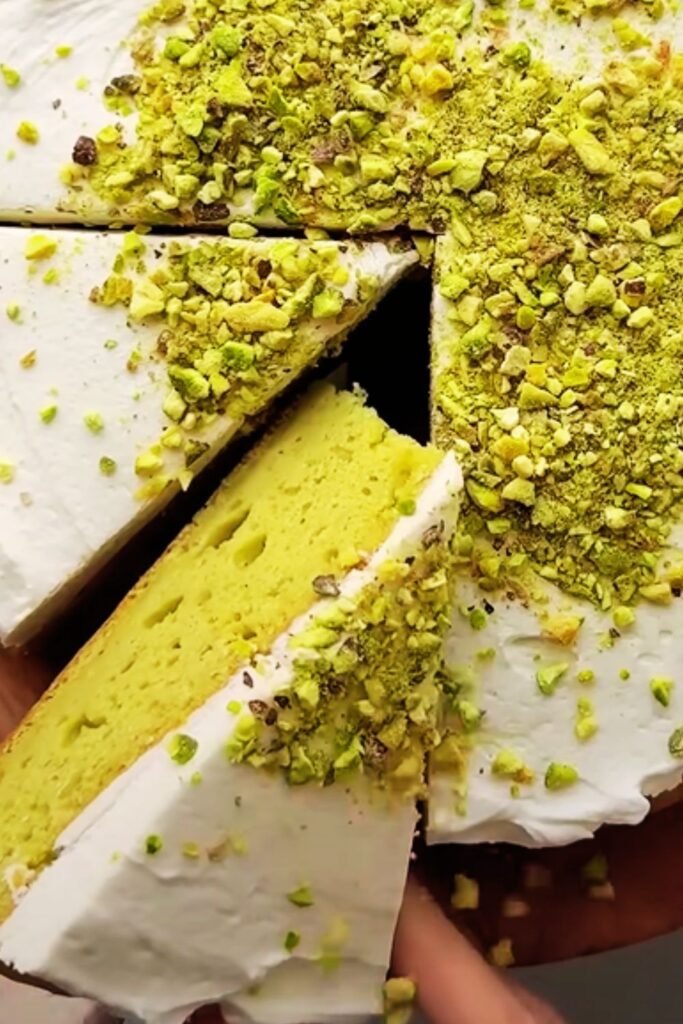Christmas wouldn’t be complete without the rich, aromatic centerpiece that brings families together around the dining table – the traditional Christmas cake. I’ve been perfecting my Christmas cake recipe for over fifteen years, and I’m excited to share every secret, tip, and variation that will help you create a masterpiece worthy of your holiday celebrations.
There’s something truly magical about the process of making a Christmas cake. The anticipation builds from the moment you begin soaking the fruits in October, through the careful mixing of ingredients, to that final moment when you slice into the rich, dark cake on Christmas Day. My grandmother always said that a Christmas cake carries the love and memories of everyone who helped make it, and I couldn’t agree more.
What Makes a Christmas Cake Special
A traditional Christmas cake is fundamentally different from your everyday sponge or layer cake. It’s a rich, dense fruitcake that’s been aged to perfection, allowing the flavors to meld and intensify over weeks or even months. The key characteristics that define an authentic Christmas cake include:
Fruit-to-batter ratio: Unlike regular cakes where fruit is an addition, Christmas cake is predominantly fruit held together by a rich, spiced batter.
Alcohol content: Traditional Christmas cakes are “fed” with brandy, rum, or whiskey throughout the aging process, which preserves the cake and adds incredible depth of flavor.
Aging process: These cakes improve with time, developing complex flavors that simply can’t be rushed.
Dense texture: The finished cake should be moist, dense, and incredibly rich – a small slice goes a long way.
Decorative potential: Christmas cakes serve as edible canvases for elaborate marzipan and royal icing decorations.
My Essential Ingredients Breakdown
Creating the perfect Christmas cake starts with understanding each ingredient’s role. I’ve learned through years of experimentation that quality ingredients make all the difference.
The Fruit Mixture
| Ingredient | Weight | Purpose | Soaking Time |
|---|---|---|---|
| Raisins | 300g | Sweetness and moisture | 24-48 hours |
| Sultanas | 200g | Delicate flavor | 24-48 hours |
| Currants | 150g | Traditional tartness | 24-48 hours |
| Mixed peel | 100g | Citrus brightness | 24-48 hours |
| Glacé cherries | 150g | Color and texture | 24-48 hours |
| Dried cranberries | 100g | Modern twist | 24-48 hours |
| Chopped almonds | 75g | Crunch and richness | No soaking needed |
The Cake Base
| Ingredient | Amount | Role | Quality Notes |
|---|---|---|---|
| Plain flour | 250g | Structure | Use high-quality flour |
| Butter | 225g | Richness and moisture | Room temperature |
| Brown sugar | 200g | Sweetness and color | Dark muscovado preferred |
| Eggs | 4 large | Binding and structure | Free-range recommended |
| Ground almonds | 50g | Texture and flavor | Freshly ground if possible |
| Mixed spice | 2 tsp | Traditional flavor | Homemade blend preferred |
| Cinnamon | 1 tsp | Warmth | Ceylon cinnamon |
| Nutmeg | 1/2 tsp | Complexity | Freshly grated |
| Brandy/Rum | 4 tbsp | Flavor and preservation | Good quality alcohol |
Additional Flavor Elements
Zest and juice: I always include the zest of one lemon and one orange, plus two tablespoons of fresh orange juice. This citrus element brightens the entire cake and prevents it from being overly heavy.
Vanilla extract: Two teaspoons of pure vanilla extract adds warmth and rounds out the flavor profile.
Black treacle: One tablespoon provides that distinctive dark color and subtle molasses flavor that’s essential to traditional Christmas cake.

The Art of Fruit Preparation
The secret to my Christmas cake’s exceptional flavor lies in how I prepare the fruit. This process begins at least 24 hours before baking, though I prefer to start two days ahead.
I combine all the dried fruits in a large bowl, removing any stems from the raisins and roughly chopping any oversized pieces of mixed peel. The glacé cherries get special attention – I rinse them under cold water to remove excess syrup, then pat them completely dry and quarter them. This prevents them from sinking to the bottom of the cake during baking.
Next comes the soaking process. I pour over enough brandy or rum to just cover the fruit, then add the citrus zest and juice. The mixture gets a thorough stir, then I cover it tightly with plastic wrap and leave it at room temperature. I stir it once or twice during the soaking period to ensure even absorption.
My Step-by-Step Baking Method
Preparation Phase
I always begin by preparing my tin meticulously. For Christmas cake, I use a 20cm round tin, which I line with a double layer of baking parchment. The parchment extends about 5cm above the rim of the tin – this extra height protects the cake from over-browning during the long, slow baking process.
I also tie a double layer of brown paper around the outside of the tin, creating an insulating barrier that helps the cake bake evenly. This old-fashioned technique makes a real difference to the final texture.
The Mixing Process
The mixing order matters enormously in Christmas cake making. I start by creaming the butter and sugar until light and fluffy – this takes about 5 minutes with an electric mixer. The mixture should be noticeably paler and increased in volume.
I add the eggs one at a time, beating well after each addition. If the mixture starts to curdle, I add a tablespoon of flour and continue beating. The black treacle and vanilla extract go in next, followed by the citrus juice.
In a separate bowl, I combine the flour, ground almonds, and all the spices. I sift this mixture to ensure even distribution of the spices. The dry ingredients get folded into the butter mixture using a large metal spoon, working gently to maintain the cake’s structure.
Finally, I fold in the soaked fruit mixture, including any liquid that hasn’t been absorbed. The batter should be thick but still fall reluctantly from the spoon.
Baking Technique

My oven gets preheated to 150°C (130°C fan). I spoon the mixture into the prepared tin, spreading it evenly and making a small depression in the center – this helps the cake rise evenly.
The baking process is deliberately slow and gentle. I bake the cake for approximately 3 to 3.5 hours, checking after 2.5 hours. The cake is done when a skewer inserted into the center comes out with just a few moist crumbs attached.
During baking, I cover the top with a double layer of baking parchment after the first hour to prevent over-browning. If the cake seems to be coloring too quickly, I reduce the temperature by 10°C.
Cooling and Initial Storage
Patience is crucial at this stage. I let the cake cool completely in the tin – this usually takes several hours. Once cooled, I turn it out onto a wire rack and carefully remove all the parchment paper.
The cake then gets its first “feeding” of alcohol. I pierce the surface all over with a fine skewer and slowly drizzle over 2-3 tablespoons of brandy or rum, allowing it to soak in completely.
I wrap the cake tightly in a double layer of baking parchment, then in foil, and store it in an airtight container. The cake needs at least two weeks to mature, though it’s even better after four to six weeks.
The Feeding Process
This is where Christmas cake making becomes almost ritualistic. Every week, I unwrap the cake, pierce it lightly with a skewer, and add 1-2 tablespoons of alcohol. The cake gradually absorbs these additions, becoming more moist and flavorful with each feeding.
I keep a feeding log to track when I’ve added alcohol and how much. This helps me gauge the cake’s development and ensures I don’t over-feed it. A well-fed Christmas cake will have a deep, complex flavor and incredibly moist texture.
Decoration Techniques
Traditional Marzipan Layer
Two weeks before Christmas, I apply the marzipan layer. I brush the cake with warmed apricot jam to help the marzipan adhere, then roll out homemade or high-quality bought marzipan to about 5mm thickness.
The marzipan drapes over the cake, and I smooth it down the sides, trimming the excess at the base. Any air bubbles get pricked with a fine skewer and smoothed out. The marzipanned cake needs to dry for at least a week before adding royal icing.
Royal Icing Application
For the final decoration, I make royal icing using egg whites and icing sugar. The consistency should hold soft peaks – not too stiff, as this makes it difficult to spread smoothly.
I apply the icing in thin layers, building up the coverage gradually. The first layer seals the marzipan, while subsequent layers create the smooth, white finish. I use a palette knife for application and a side scraper for achieving perfectly smooth sides.

Nutritional Information and Serving Guidelines
| Nutrient | Per 100g | Per Serving (80g slice) |
|---|---|---|
| Calories | 380 | 304 |
| Fat | 12g | 9.6g |
| Saturated Fat | 6g | 4.8g |
| Carbohydrates | 65g | 52g |
| Sugars | 45g | 36g |
| Protein | 5g | 4g |
| Fiber | 3g | 2.4g |
| Sodium | 120mg | 96mg |
Christmas cake is undeniably rich, so I always serve small portions. A typical 20cm cake serves 16-20 people comfortably. I slice it with a sharp, thin-bladed knife, cleaning the blade between cuts to maintain clean edges.
Serving Suggestions and Accompaniments
The beauty of Christmas cake lies in its versatility. I love serving it simply with a cup of strong tea or coffee, allowing the cake’s complex flavors to shine. For special occasions, I accompany it with:
- Brandy butter: Homemade brandy butter made with unsalted butter, icing sugar, and a generous splash of brandy
- Crème anglaise: A light custard sauce that complements the cake’s richness without overwhelming it
- Fresh berries: Seasonal berries provide a tart contrast to the sweet, rich cake
- Cheese selection: A small portion of sharp cheddar or creamy brie creates an interesting flavor combination
- Hot chocolate: Rich, dark hot chocolate makes an indulgent pairing for winter evenings
Storage and Longevity
Properly made and stored Christmas cake has an impressive shelf life. I’ve kept cakes for up to six months, and they’ve only improved with age. The key is maintaining proper storage conditions:
The cake must be wrapped tightly in parchment paper and foil, then stored in an airtight container in a cool, dry place. I check on it weekly, re-wrapping if necessary and continuing the feeding process until about a week before serving.
Once decorated with marzipan and royal icing, the cake will keep for several weeks at room temperature. I cover it loosely with a clean tea towel to protect the icing from dust while allowing air circulation.
Troubleshooting Common Issues
Dry Cake
A dry Christmas cake usually results from overbaking or insufficient feeding. To rescue a dry cake, I increase the frequency of alcohol feeding and ensure the cake is wrapped more tightly during storage.
Sunken Center
If the cake sinks in the middle, it’s often due to opening the oven door too frequently during baking or using an oven temperature that’s too high. The slow, gentle baking process can’t be rushed.
Fruit Sinking
When fruit sinks to the bottom, it’s usually because the batter was too thin or the fruit was too wet. I always pat glacé cherries dry and ensure the batter has the right consistency before folding in the fruit.
Cracked Top
Cracks on the surface indicate the oven temperature was too high or the cake was placed too high in the oven. I always use the middle shelf and maintain a steady, low temperature.
Creative Variations
Over the years, I’ve developed several variations on the traditional recipe:
Chocolate Christmas Cake: I replace 50g of flour with cocoa powder and add 100g of dark chocolate chips to the fruit mixture.
Tropical Christmas Cake: I substitute some traditional fruits with dried mango, pineapple, and coconut flakes, creating a lighter, more exotic flavor profile.
Gluten-Free Version: Using gluten-free flour blend and adding extra ground almonds creates a cake that’s virtually indistinguishable from the traditional version.
Individual Cakes: The mixture works beautifully in small tins, creating personal-sized Christmas cakes perfect for gifts.
Frequently Asked Questions
Q. Can I make a Christmas cake without alcohol?
Absolutely! I substitute the alcohol with strong black tea, apple juice, or orange juice. The cake won’t have quite the same depth of flavor or keeping qualities, but it’s still delicious. I recommend consuming alcohol-free versions within two weeks of making.
Q. How far in advance should I make my Christmas cake?
I always make mine at least six weeks before Christmas, though eight to ten weeks is even better. The cake needs time to mature and develop its full flavor profile. However, if you’re short on time, even two weeks of maturing will produce a good result.
Q. What’s the best alcohol to use for feeding?
Brandy is traditional and produces excellent results, but dark rum, whiskey, or even sherry work well. I avoid using cooking alcohol – invest in something you’d be happy to drink, as the quality really shows in the finished cake.
Q. Can I freeze Christmas cake?
Yes, Christmas cake freezes beautifully for up to six months. I wrap it thoroughly in plastic wrap and foil before freezing. I thaw it slowly at room temperature and continue the feeding process once it’s defrosted.
Q. Why is my marzipan cracking?
Marzipan cracks when it dries out too quickly or if the cake underneath is too moist. I ensure the cake surface is relatively dry before applying marzipan and work in a room that’s not too warm or drafty.
Q. How do I achieve a smooth royal icing finish?
The secret is building up thin layers rather than trying to apply one thick coat. I also ensure my icing consistency is perfect – it should hold soft peaks but spread easily. Using a side scraper and working quickly while the icing is still wet helps achieve that professional finish.
Q. Can I use fresh fruit instead of dried?
Fresh fruit contains too much moisture and will make the cake soggy and affect its keeping qualities. Stick to properly dried fruits for the best results.
Q. What if I don’t have mixed spice?
I make my own blend using cinnamon, nutmeg, allspice, cloves, and ginger. The exact proportions can vary according to taste, but I typically use 2 parts cinnamon to 1 part each of the others.
Making Christmas cake has become one of my favorite holiday traditions. There’s something deeply satisfying about creating something so rich in history and flavor, knowing that it will be the centerpiece of Christmas celebrations. The process itself becomes part of the holiday experience – from the initial fruit soaking through the weekly feeding ritual to that final, magical moment when you cut the first slice.
I hope this guide helps you create your own Christmas cake masterpiece. Remember, baking is as much about love and patience as it is about technique. Don’t be afraid to make the recipe your own, and most importantly, enjoy every step of the process. After all, the memories made while baking are just as precious as the cake itself.